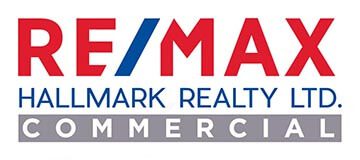“How to appraise commercial properties while considering the impact of COVID-19?”

“How to appraise commercial properties while considering the impact of COVID-19?”
Most are concerned that commercial properties have substantially decreased in value.
It has been said to me: “How is it possible to appraise properties while considering the impact of COVID-19?”
Many have suggested that appraising real estate in this environment is equivalent to appraising with a blindfold on. The reality is, the job of an appraiser is more difficult than it has been in many years, but the job is not impossible.
As appraisers, we rely on historical property data, but rarely is this data perfect.
This profession is an art, not a science, and thus we must use data and information available to us, as well as our experience, to provide our opinion on a property’s value. This is the new normal in the appraisal profession and as appraisers, we must adapt.
That being said, what is my opinion? Have commercial property values dropped 15 to 25 per cent, similar to the stock market? Are cap rates now seven per cent-plus across Canada for all asset classes? Should I sell my real estate and buy gold?
No, no and no.
Breaking down asset classes
Commercial real estate in Canada is a stable and secure means of investment and the vast majority of properties will be impacted nominally by the COVID-19 pandemic.
The most substantial impact will be on retail properties where multiple tenants are distressed and seeking rent relief. The retail market will see the biggest shift as a result of COVID-19.
This asset class was already undergoing a massive transformation with more and more purchasers moving to online shopping as their primary means of acquiring goods.
The COVID-19 pandemic has accelerated this trend, and as a result, many retail developments will need to be repositioned or redeveloped.
Nonetheless, those retail developments with strong tenancies – like grocery-anchored retail developments with smaller tenant bays – will continue to perform well and be in demand from purchasers.
The impact on the office market is the most difficult to predict. The world is currently undergoing the largest work-from-home experiment in history.
Every company in Canada was forced to adapt to a work- from-home system in a few short weeks and many may embrace that it is both cheaper and more efficient to have staff work from their homes on a full- or part-time basis.
The result on office vacancy and rental rates remains to be seen.
Nonetheless, office buildings with strong tenant covenants and little vacancy will continue to be sought after by buyers.
Multifamily likely to be in demand
Multifamily assets will likely experience increased demand from investors given their resilience for weathering the economic downturn.
The income risk is spread over a large number of units and landlords can use potential requests for rent relief as a tool to lock in tenants at today’s rental rates for extended terms, resulting in strong, longer-term occupancy.
Further, many national owners with large shares of office and retail product may look to multifamily assets as a way to stabilize and diversify their portfolios.
Industrial assets will generally go back to normal upon resolution of the COVID-19 pandemic, as demand for the products and services they provide stabilizes.
Further, this asset class will benefit from the inevitable explosion of demand for online shopping fulfillment facilities.
The number of online shoppers has increased exponentially in the last three weeks but with that, the consumer expectation for delivery times will also increase.
Customers will no longer wish to wait multiple days to receive their goods and will flock to online retailers that can provide the shortest delivery time.
This situation will further increase demand for industrial distribution facilities in markets across Canada.
Ultimately, properties whose net operating incomes and stability are impacted will see the greatest decreases in value. Irrespective of the asset class, if multiple tenants require rent relief or go dark, the immediate term net income will be impacted, as will the value.
Creative landlords who can find ways to preserve tenancies without a substantial reduction to income will weather this storm best.
Thankfully, Canada has no shortage of creative and capable landlords who will certainly find ways to preserve and stabilize income streams from their commercial assets.
Key factors in appraisals
As appraisers, when valuing these assets, we must work to determine what the net operating income is today, and for the next 10 years.
Increased focus will be placed on the Discounted Cash Flow method as it allows us to effectively estimate the current and future income of a property.
When valuing an income-producing asset with a large number of tenants seeking rent relief, increased consideration will need to be placed on the following points:
- How likely is it that a particular tenant will go dark?
Multiple businesses are going to close permanently in the coming months; others will go dark in the coming years, unable to recover from the impacts of COVID-19. There will now be a much larger focus on the financial covenants and anticipated performance of the tenants within a particular building, such that we can project the likelihood of them fulfilling the rental obligations set out within their lease agreements.
- If the tenant is not anticipated to go dark, what does the rent relief provision offered by the landlord look like and how does it impact income?
Landlords will take many different routes in attempting to retain struggling tenants. It’s crucial that appraisers intimately understand any rent relief provisions provided and accurately consider them within an appraisal.
- For those tenants that do vacate, how long will it take to lease up the newly vacant space?
Appraisers will need to consider total market vacancy and anticipated new demand. In many cases, lease-up times for newly vacant space may be well in excess of one year.
- What is a reasonable stabilized vacancy allowance for the asset?
In some cases, where historically we may have used three to five per cent, certain assets may now be stabilized at 10% to 15%.
- What rates of return are reasonable to apply to the projected income?
As the capitalization rate is a function of upside and risk, it’s important to note that the more speculative an income stream is, the higher the expected return rates will be. That being said, assets with a strong mix of tenants, all of whom continue to pay rent, should not see an increase in capitalization rates although assets with increasingly speculative income will see a notable increase in the utilized capitalization rate.
With all this being said, is being an appraiser today more difficult than it was four weeks ago? Yes.
Is it impossible? No.
We will adapt to this new reality, and continue to provide well-informed and reasonable opinions on property values. Please feel to reach out to me with any questions or comments.
Source RENX. Click here to read a full story
You must be logged in to post a comment












